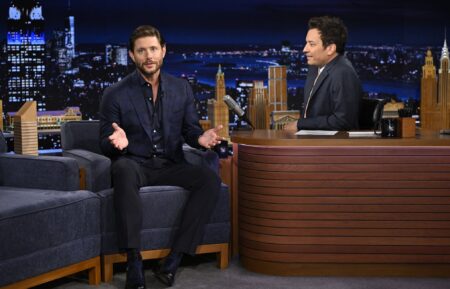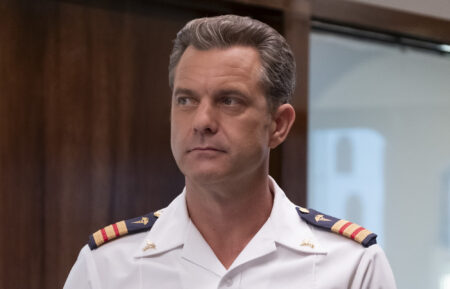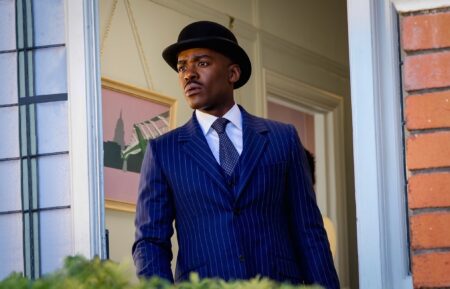‘Manhunt’: Tobias Menzies Explains That Double-Edged Finale
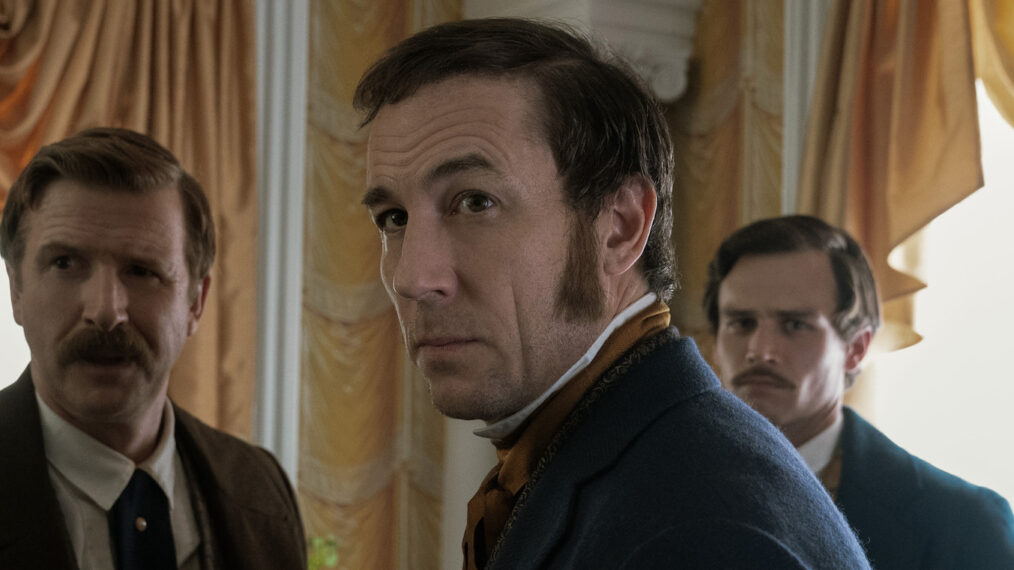
Spoiler Alert
[Warning: The following contains MAJOR spoilers for the Manhunt series finale.]
The Manhunt series finale depicts one of war secretary Edwin Stanton’s most famous acts. The politician barricaded himself in his office for three months in protest of President Andrew Johnson’s attempt to remove him from office. Johnson became the first American president to be impeached because of this move; just one vote saved him from complete removal. The impeachment took place while Stanton was still a shut-in that office.
Barricading himself in the room was the final scene Tobias Menzies filmed for the Apple TV+ limited series, which debuted its finale on Friday, April 19. The Emmy winner tells TV Insider that it was a perfect way to wrap this political dogfight of a tale that tells “such a strange bit of history.”
“Those moments, for me, really transport you back to a different time because it feels so analog,” Menzies shares. And it’s a testament to the “profoundly stubborn human” that was Lincoln’s right-hand man. A long-sufferer of severe asthma, Stanton pushed his body to the limit when pushing his desk across his office in this last stand. “In a way it is what kind of killed him, but it was also I think his greatest strength,” Menzies says of this moment.
“You could argue that he was the right person at the right moment for the country, that someone so bloody-minded and dogged was there, especially around his relationship with Johnson [Glenn Morshower],” The Crown alum explains. “Barricading himself, there were big political wins from that. There’s not many politicians who would’ve made those decisions.”
This protest took place after the death of John Wilkes Booth (played by Anthony Boyle here) and the hanging and imprisonment of those who conspired to assassinate President Abraham Lincoln (Hamish Linklater) just after the end of the Civil War. The manhunt put Lincoln and Stanton’s Reconstruction dreams at a standstill; the country couldn’t hope to move forward from the end of slavery until the people who killed Lincoln were brought to justice. For Stanton, this search was political and personal.
A talented prosecutor before joining Lincoln’s cabinet, Stanton didn’t care how obvious his vendetta was for Booth and Confederate president Jefferson Davis. He used the power of the press to undermine Confederate rebels whenever possible, unafraid to bend the truth to serve his cause.
Throughout the series, Stanton creatively crafted press releases to paint the picture he wanted to convey to the American people. That picture was one of undoubted victory for the Union despite Lincoln’s assassination. Stanton embarrassed and degraded Confederate leaders every chance he got. In the finale, for example, Davis was captured wearing his wife’s shawl but Stanton put out a release saying he was wearing a dress.
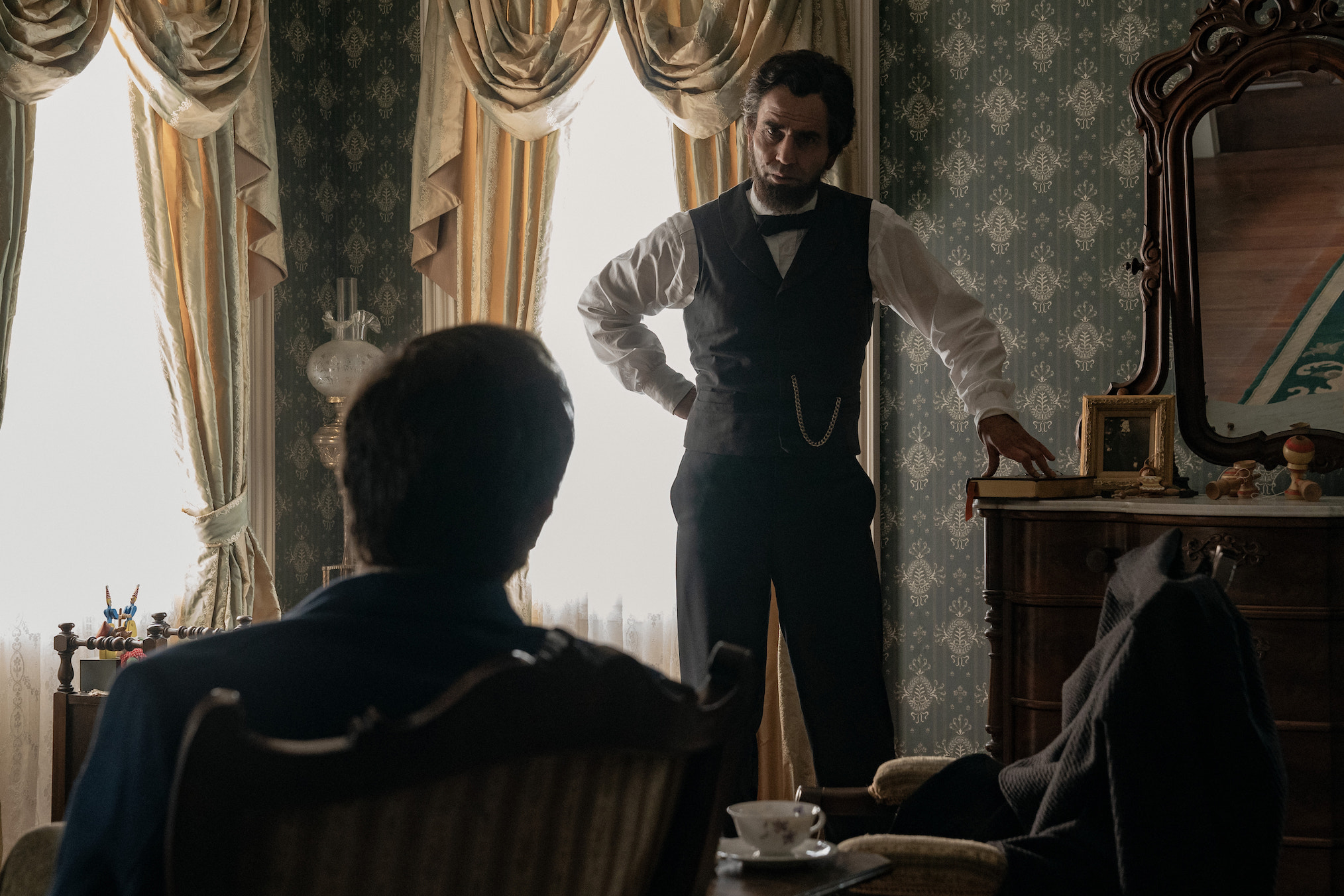
Tobias Menzies and Hamish Linklater share their final scene as Edwin Stanton and Abraham Lincoln in the Manhunt finale (Apple TV+)
This use of spin is “one of the things that allows [Manhunt] to resonate with our times now,” says the Outlander alum, “this idea that a lot of politics is about controlling the narrative. I don’t know enough about my history to know whether that is a modern idea that we’re kind of feathering into the story that we tell, but I think those are really helpful, those moments. It is true to politics now, and I suspect it was probably true to politics then, that it’s a dirty business … It’s not always about the truth. And in that way, we see Stanton as a sophisticated political operator in those moments, one who’s willing to get down in the mud and scrap.”
Stanton fought until the end in the Manhunt finale. The final moments of the series show Stanton after he’d beat Johnson and had been appointed to the Supreme Court by President Ulysses S. Grant. Stanton was appointed on December 20, 1869. He died four days later on Christmas Eve at the age of 55.
Menzies says that Stanton’s efforts to avenge Lincoln and assure the implementation of Reconstruction were successful “with an asterisk.”
“Part of the conversation that has to be had in the finale is yes, he did salvage a lot, but he also lost a lot,” Menzies explains. “The things that he was trying to deliver, and certainly would’ve tried to continue that work through the Supreme Court, was the land rights and the voting rights for freed slaves. There’s a real poignancy to us watching it because we know how long it took to rectify that.”
The core of Manhunt is the loving friendship between Stanton and Lincoln. Flashbacks to their conversations in the months leading up to the assassination serve as the emotional anchor of the seven-episode drama. Menzies says his final scene with Linklater in Episode 7 is the best example of their characters’ bond. The scene is set after the death of Lincoln’s young son, Willie Lincoln, who died at age 11.
“Stanton goes to offer his resignation, and Lincoln doesn’t accept it,” Menzies says. “I like the texture of that scene in terms of you can feel the weight of what they’ve been through the camaraderie and the connection that’s been built over these years of so much loss both in the country, but also they’ve both lost children. And so it’s freighted with a lot of life and feeling, but also such warmth and humor in there as well. That was certainly what we were trying to conjure as the backbone of that relationship within the show.”
In the end, Booth never made it to Richmond for his “hero’s” welcome. In fact, Boyle’s character didn’t even make it to the final episode. His dying words were “useless, useless,” but Stanton’s manhunt was anything but.
Manhunt, Season 1 Available Now, Apple TV+
From TV Guide Magazine
How 'Countdown' Recruited Jensen Ackles to Go Full 'Die Hard'
Countdown boss Derek Haas talks creating the character around Ackles, and the cast teases the “Avengers”-like team of the crime thriller. Read the story now on TV Insider.





